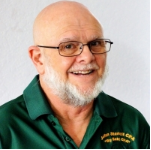
This is part 2 of 5 in a series on Passive Activities. (Read Part 1 here)
Prior to the Tax Reform Act of 1986 (TRA), taxpayers were allowed to deduct non-economic losses from passive activities from wage and investment income. Thus, the infamous term “tax shelter” was commonly used in tax planning. However, in the TRA, tax shelters went the way of income averaging and ACRS depreciation, along with other now defunct aspects of our tax code. While the law did not ban such activities, it severely restricted taxpayers’ ability to deduct losses from what is termed “passive activities.”
A passive activity is defined as a rental activity or a trade or business in which one does not materially participate. Rental activities are defined as passive regardless of the level of participation, although exceptions to deducting such losses have been carved out. The two major exceptions are for 1) real estate professionals and 2) individual taxpayers with active participation and adjusted gross income below a certain dollar threshold.
The passive activity rules apply at the individual level. Therefore, passive activities are reported on Schedules C, D, or F; Partnership Form 1065; S Corporation Form 1120S; and Form 1041 Trusts. The rules are also applied to personal service corporations and closely-held C Corporations.
So, how does one “materially participate” in a rental activity? There are seven tests. Only one test must be met for the taxpayer to be considered to be a material participant. For married couples, the time tests are measured using the time devoted by both spouses.
- You work 500 or more hours in the activity.
- You perform substantially all the work on the activity in a given year. Substantially all includes work of non-owner employees and is defined as more than 70% of hours worked on the activity during the year.
- You work 100 or more hours and no one else does more.
- You work more than 500 hours in all passive activities owned. You are deemed to materially participate if the activity is a significant participation activity (SPA) and your aggregate participation in all SPAs exceeds 500 hours.
- If you materially participate in the activity for five of the immediately preceding 10 tax years.
- If it is a personal service activity with three years material participation prior to the current activity. For example, a retired CPA Who maintains an ownership interest is considered to have martially participated if he or she worked as an owner for three years or more.
- Prove material participation based on fact and circumstances, demonstrating activity on a regular, continuous, and substantial basis during the year.
Maintaining a time log of activities performed on the activity is a good procedure to establish proof of time spent on the activity.
Passive activities that cannot be deducted in the current year are suspended and may be deducted in future years against passive gains. When the property is sold in a fully taxable transaction, any suspended losses may be deducted at that time.























Recent Comments